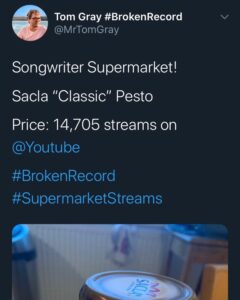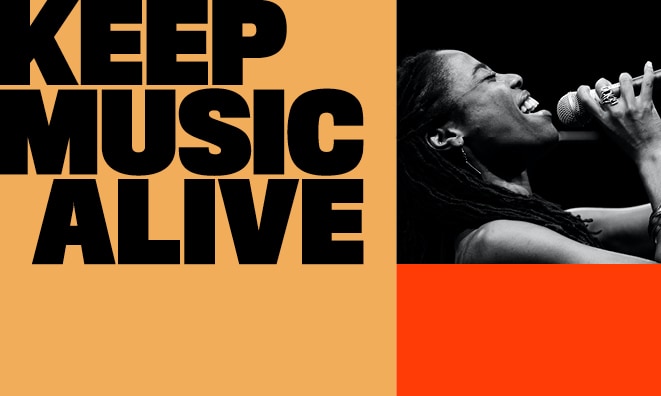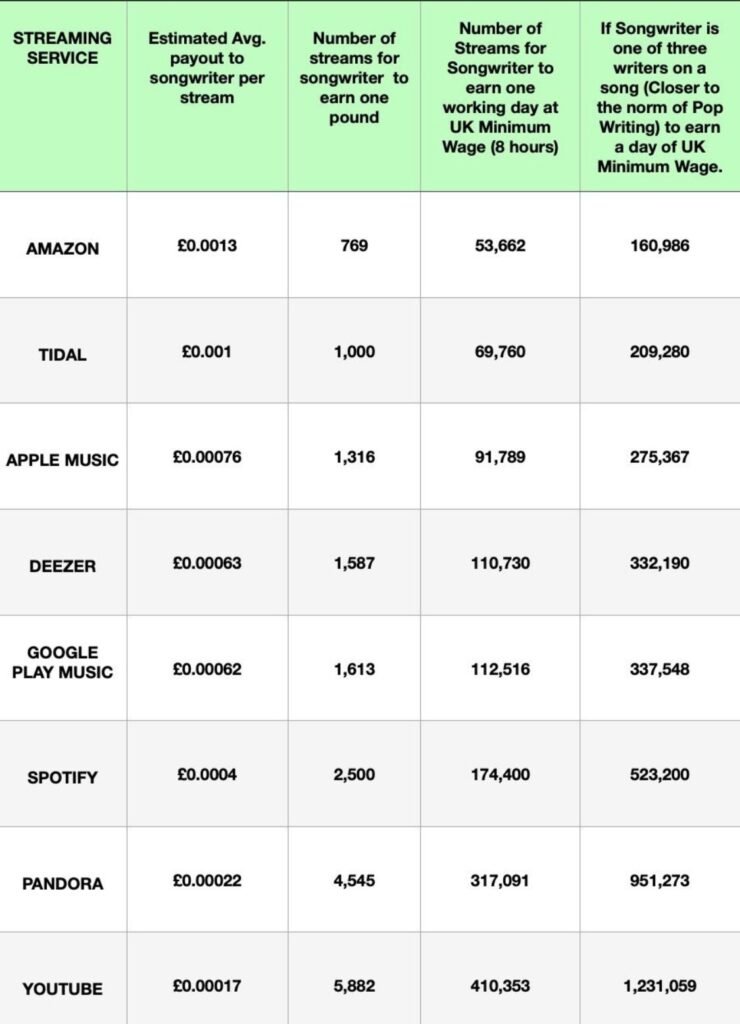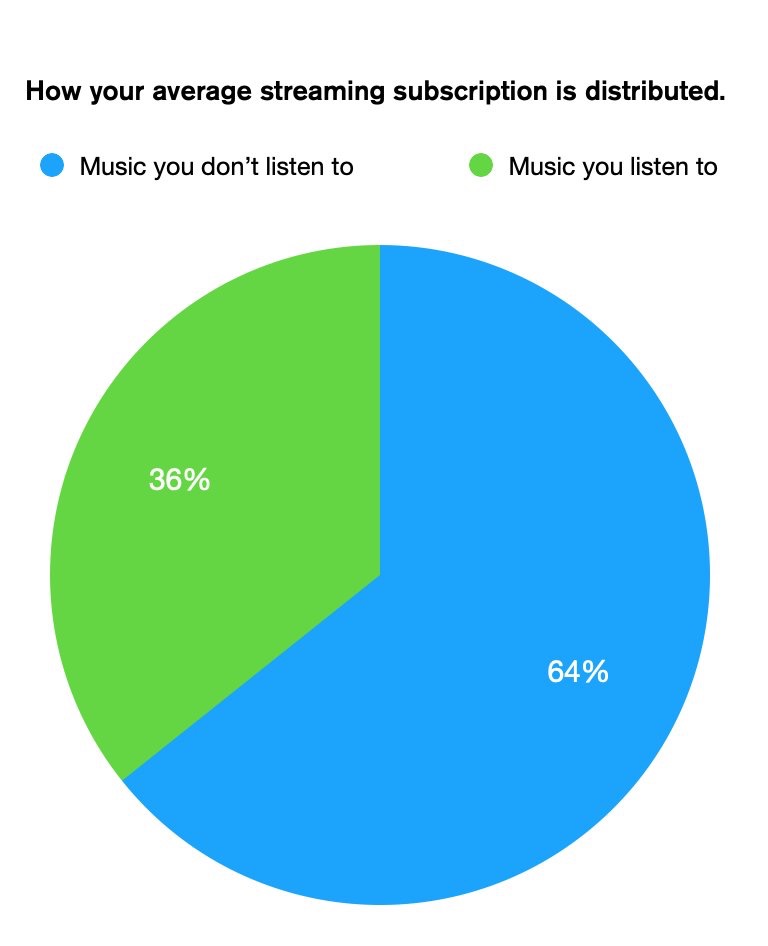Should we be readdressing how we split revenue for streaming?
As we approach the middle of 2020, there’s no doubt that we are increasingly living in an online world. While technological developments mean that many of us are lucky enough to stay connected with loved ones, the hit taken by those working in the music and entertainment business has been a big one. Since the Covid-19 crisis took hold a large proportion of industry professionals are struggling financially, unable to work, bringing the issue of musicians’ earnings to the forefront. In May the USA asked Congress for improved support for musicians in the next relief package, however, in the UK there have been several prominent conversations happening about music streaming payments.
Streaming revenues have gone up year on year and the IFPI announced 56% of $20 billion global revenues last year from streaming. The average payout per stream is £0.00076 on Apple Play and £0.0004 on Spotify. These numbers are an average as the calculations for payment are often complex and take into account many different factors. The overall split example of the current working model outlines:
- Spotify keeps 30%
- The Recording gets 57%
- The Song gets 13% (of which publishers get half)
- The writer(s) get(s) 6.5%
In the UK the Ivors Academy and the Musicians’ Union have formed the “Keep Music Alive” alliance and launched a petition to the Government for an industry review of streaming. Ivors Academy CEO Graham Davies believes the current model is out-dated and not suited to the way the industry currently works:
“It is time to replace the pre-digital record industry models with a system that is fit for our digital future. Currently, payments are still structured around record labels being exclusively responsible for recording, manufacture, shipping, and marketing. Those days are gone and now we see songwriters, publishers, performers, managers, and producers investing heavily in developing music and acts. They do this in their own studios, at their own cost, in their own time and at their own risk.”
Another campaign initiated by UK musician and PRS Director Tom Gray has been working for change in tandem by launching the #BrokenRecord campaign to #FixStreaming. Gray argues that the split amounts broken down further into their respective copyright areas highlight some of the problems when it comes to streaming.
The 4 associated rights with a song are:
- The Master Right (the recording)
- The Performance Right (the song)
- The Mechanical Right (reproduction rights)
- The Neighbouring Right (performers and players earn money from a broadcast of their performance)
Gray explains the current model states there is no broadcasting element to streaming, and  so the Neighbouring Right doesn’t get taken into account at all and is eliminated from the equation. He argues the suggested songs that automatically play next on streaming platforms are more like broadcast radio and that this element should be changed. Another point he makes is the companies that own the Major Labels are also the biggest publishers in the world. If there are publishers working on behalf of songwriters then they will control the song, which means the Performance Rights and the Mechanical Rights goes to them.
so the Neighbouring Right doesn’t get taken into account at all and is eliminated from the equation. He argues the suggested songs that automatically play next on streaming platforms are more like broadcast radio and that this element should be changed. Another point he makes is the companies that own the Major Labels are also the biggest publishers in the world. If there are publishers working on behalf of songwriters then they will control the song, which means the Performance Rights and the Mechanical Rights goes to them.
Whilst Gray covers the legal and technical elements of ownership in-depth, he also equates how many streams it takes in the current model to afford various supermarket items, using practical examples we can all understand to demonstrate the stark reality of streaming for musicians.
Gray also highlights an interesting area of streaming that may have been unknown to most of us: your subscription fees do not necessarily go to the artists that you have listened to. “If you listen to one song in a month, of your £9.99 subscription, £0.005 would go to the one song you listened to. £3 would go to Spotify and £6.995 would go to music you haven’t listened to.”
Along with Gray, several arguments for a “user-centric” model have been made by others in recent years to address this issue. Stuart Dredge from musically.com explains:
“The current ‘pro rata’ system used by streaming services divides their royalty pool by each track’s share of streams in a given period. If Drake gets 5% of the streams, his rights holders get 5% of the royalties. Which means that even if you never play Drake’s music, he’s getting 5% of your subscription. However, under a user-centric model, the royalties from your monthly payment would only go to the tracks that you listened to.”
Dredge acknowledges it is unknown just how successful this change would be in practice, but also notes that Deezer plans to trial a user-centric model in France (with labels only) to find out how this might translate in the future.
While it still seems that the answer to fully addressing the complexities of streaming revenue may be some way off, it’s a topic that is getting a great deal of coverage with one main theme in common: the streaming market is largely unregulated at present and there seems to be a unanimous call to collecting societies to become more active and involved in this area.
You can read more about the current petition updates at https://www.change.org/p/the-rt-hon-oliver-dowden-cbe-mp-secretary-of-state-for-digital-culture-media-and-sport-it-s-time-to-fixstreaming
Ivors Academy: https://ivorsacademy.com/campaign/keep-music-alive/
Tom Gray: @MrTomGray https://threadreaderapp.com/thread/1249290407088881675.html
Stuart Dredge: https://musically.com/2020/05/13/what-are-user-centric-music-streaming-payouts/


